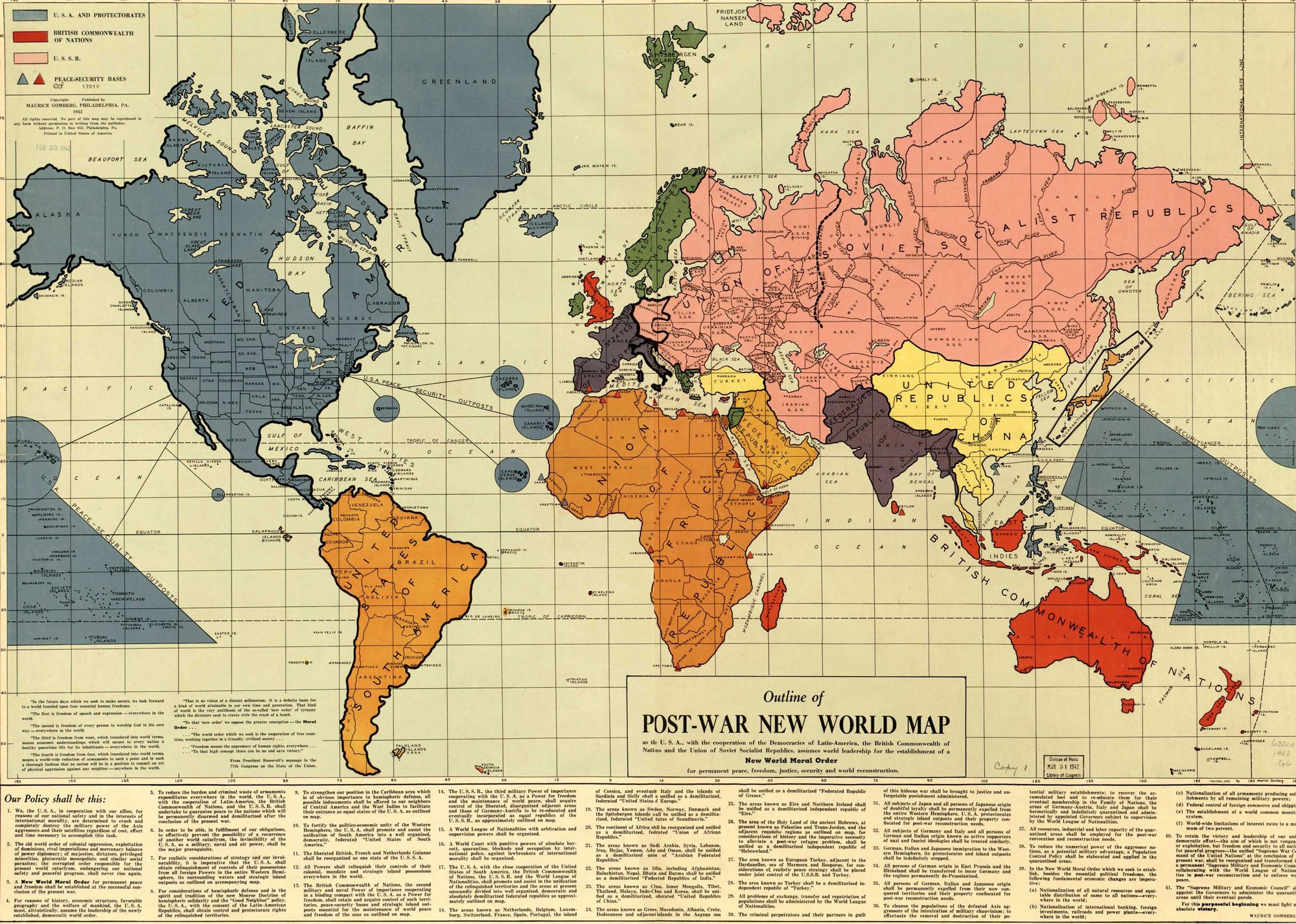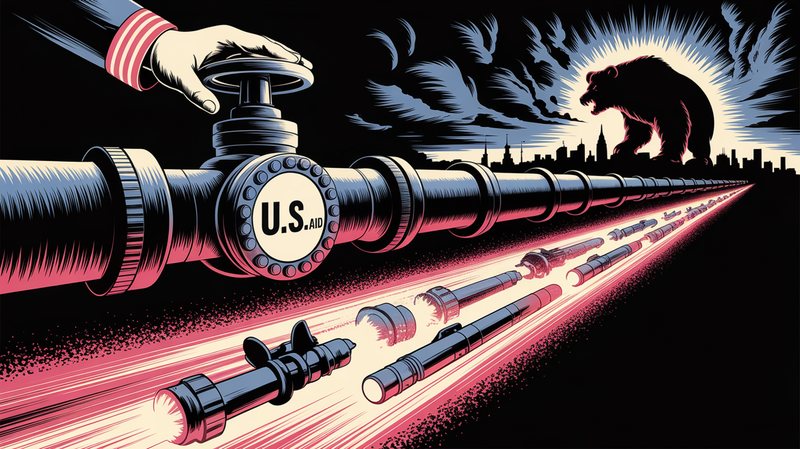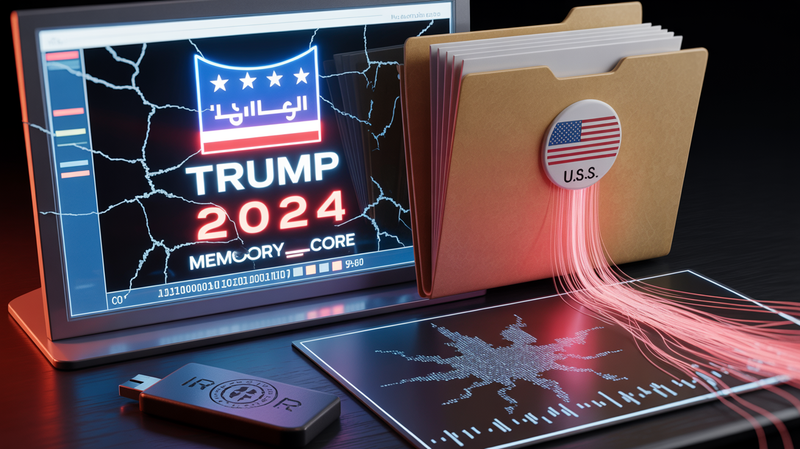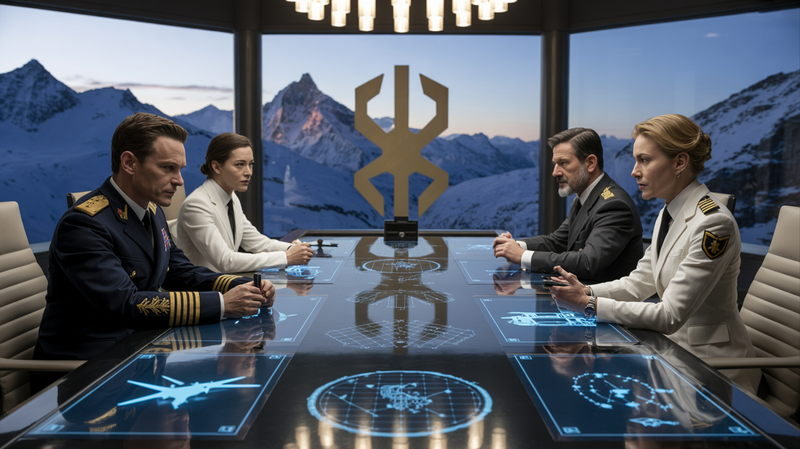The Lingering Concept of a New World Order: A Vision Yet Unfulfilled
The turbulent waves of global geopolitics have seen numerous shifts and transformations, some gradual and some tumultuous. As nations rise and fall, ideologies clash, and the balance of power perpetually teeters, the vision of a unified, morally guided world order remains a captivating yet elusive dream. One such vision was

The turbulent waves of global geopolitics have seen numerous shifts and transformations, some gradual and some tumultuous. As nations rise and fall, ideologies clash, and the balance of power perpetually teeters, the vision of a unified, morally guided world order remains a captivating yet elusive dream. One such vision was meticulously laid out in the "Post-War New World Map," conceived by Maurice Gomberg in the shadows of World War II. The map, accompanied by a manifesto describing a “New World Moral Order,” outlined a world carved into spheres of influence led by the major Allied powers. Yet, decades after its creation, this vision of a restructured world remains unrealized, teetering on the brink of imagination and potential reality.
The Geo-Political Context:
The world has witnessed significant changes since Gomberg’s map was drawn. The Cold War rose and fell, bringing with it a bipolar world order dominated by the USA and the USSR. The map's vision of a tripartite division of the world between the United States, the United Kingdom, the Soviet Union, and the Republic of China was quickly overshadowed by the Iron Curtain and the ensuing ideological battle between capitalism and communism.
The dissolution of the Soviet Union in 1991 marked the end of the bipolar world order, giving way to a unipolar moment with the United States at the helm. However, this unipolarity was short-lived. The rise of China, the resurgence of Russia, and the growing influence of regional powers have once again reshaped the global landscape, leading some to argue that we are now entering a multipolar world.
Today, this vision remains more aspiration than reality. The principles of democracy and human rights are under threat in various parts of the world, and international cooperation is often sidelined in favor of nationalistic policies. The United Nations, envisioned as a forum for the realization of this new world order, has struggled to fulfill its mandate in the face of geopolitical rivalries and the veto power of its permanent members.
Follow-up to "The Outline of the Post-War New World Map" and the Proposed "New World Moral Order"
Context and Reaction
"The Outline of the Post-War New World Map" by Maurice Gomberg, published in 1942, captured significant attention due to its radical proposals for reorganizing international borders and establishing a "New World Moral Order." The map's vision reflected the aspirations for a post-war era dominated by the Allied powers, promoting peace, democracy, and cooperation. However, it also raised questions and criticisms regarding its feasibility, the imposition of values, and the potential for power imbalances.
Evolution of the New World Order Concept
Post-World War II, the world witnessed the formation of the United Nations and the establishment of international bodies aimed at maintaining peace, promoting human rights, and encouraging economic cooperation. While these developments aligned with some aspects of the "New World Moral Order," the actual political divisions and power dynamics differed significantly from Gomberg's vision.
Cold War Dynamics
The map's anticipation of a strong alliance between the United States, the United Kingdom, the Soviet Union, and the Republic of China did not materialize as expected. Instead, the world entered the Cold War era, characterized by ideological, political, and military tensions, primarily between the U.S. and the Soviet Union. The bipolar world order that emerged was far from the cooperative vision outlined in Gomberg's map.
Post-Cold War and Contemporary Reflections
The end of the Cold War marked another significant shift in global dynamics, with an increase in unipolarity dominated by the United States. However, the 21st century has seen the rise of new powers, shifts in economic balances, and challenges to the existing world order. In this context, the concept of a "New World Moral Order" continues to be relevant as a vision for a more just and equitable global society.
Challenges and Criticism
Despite the ongoing relevance of a "New World Moral Order," the concept faces criticism related to:
- Imposition of Values: Concerns about whose values and moral standards are being promoted, and whether this represents a form of cultural imperialism.
- Power Imbalances: The continued dominance of certain nations and the marginalization of others, hindering the realization of a truly equitable world order.
- Global Crises: Issues such as climate change, pandemics, and geopolitical conflicts pose significant challenges to the establishment of a stable and ethical global society.
Future Prospects
Moving forward, the vision of a "New World Moral Order" requires a collective and inclusive effort from the global community. This involves:
- Promoting Multilateralism: Strengthening international cooperation and institutions to address global challenges.
- Addressing Inequalities: Working towards reducing economic disparities and promoting social justice.
- Encouraging Ethical Leadership: Advocating for transparent, accountable, and compassionate governance.
- Fostering Global Citizenship: Educating and empowering individuals to contribute to a just and sustainable world.
Conclusion
The "Outline of the Post-War New World Map" and the associated concept of a "New World Moral Order" represent a bold vision for a reimagined global society. While the world has witnessed significant changes since the map's publication, the aspiration for a more just, peaceful, and cooperative international order remains a pertinent and challenging endeavor.




